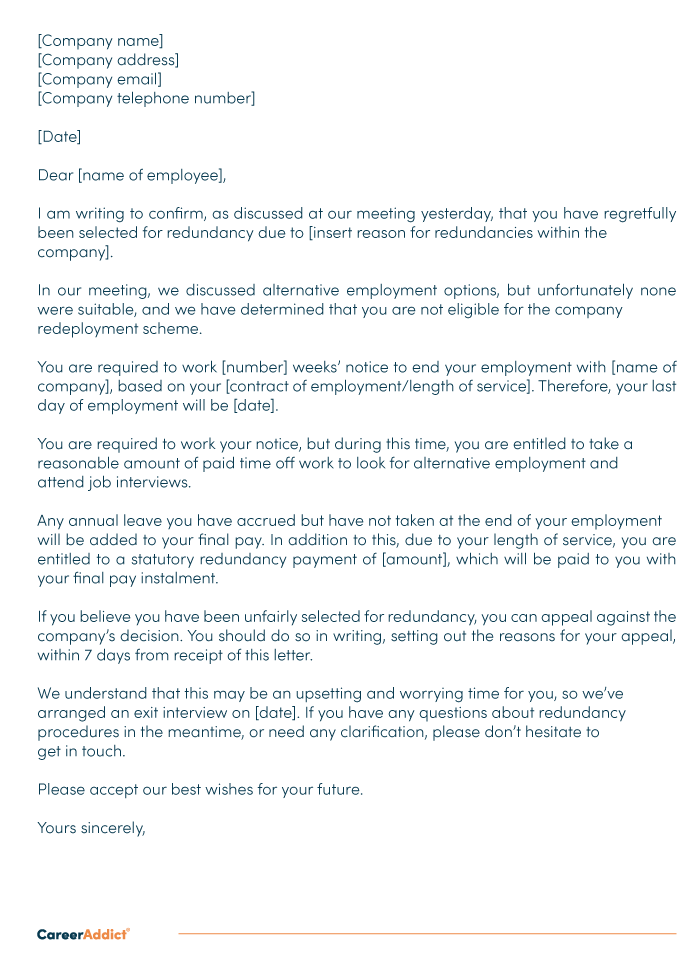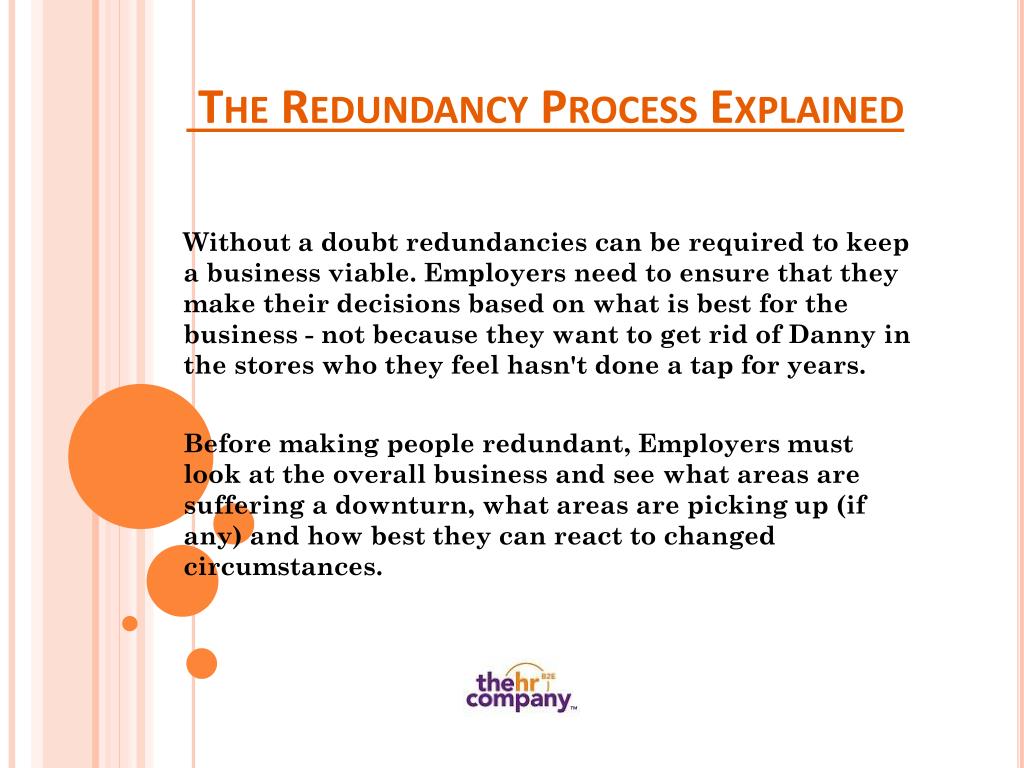What Happens to Redundancy If Company Goes Bust? A Guide to Your Rights
What Happens to Redundancy If Company Goes Bust? A Guide to Your Rights
Blog Article
Investigating the Interaction Between Firm Redundancy and Organizational Adaptability for Future Development
In the vibrant landscape of today's business world, the complex partnership between business redundancy and business flexibility arises as an essential aspect for sustained growth and success. Business usually face the difficulty of striking a fragile equilibrium in between keeping a degree of redundancy to alleviate threats and cultivating adaptability to respond swiftly to the ever-evolving market demands.
Significance of Business Redundancy
Business redundancy is an important component that boosts business strength and minimizes functional threats. By including redundancy measures within the organizational framework, companies can better withstand unexpected interruptions and changes in the service atmosphere. Redundancy functions as a calculated barrier, enabling business to adapt and respond effectively to unanticipated obstacles without endangering vital operations.
One key aspect of the importance of firm redundancy is its duty in making sure continuity during times of situation. When encountered with unexpected modifications or emergencies, redundant systems, sources, or workers can action in to keep crucial features and stop extensive disruptions. This connection not only safeguards the company's reputation and customer trust yet likewise minimizes economic losses and operational downtime.

Methods for Business Flexibility

Developing versatile business structures that allow for quick changes to market characteristics and consumer demands is crucial for remaining competitive in a rapidly evolving setting. By proactively recognizing prospective disruptions and opportunities, companies can proactively adjust and flourish in an ever-changing organization landscape.
Balancing Redundancy and Adaptability
Achieving an unified equilibrium in between functional redundancy and straight from the source organizational versatility is critical in navigating the intricacies of a dynamic business atmosphere. Redundancy within a company gives a safety and security internet, ensuring continuity and security in operations. Nonetheless, an extra of redundancy can bring about inefficiencies and prevent adaptability to changing market problems. On the other hand, business versatility allows firms to react immediately to external interruptions and seize new chances. Striking the best equilibrium between redundancy and versatility is a fragile process that calls for a deep understanding of the organization's goals, sector dynamics, and danger resistance.
To accomplish this equilibrium, business require to carry out normal analyses of their procedures to recognize locations where redundancy is essential for threat reduction and where flexibility can drive innovation and growth. Implementing flexible structures, cultivating a society of continual understanding and renovation, and urging open interaction throughout all degrees of the company are crucial methods to balance redundancy and versatility efficiently. By aligning these two critical components, companies can place themselves for sustainable growth and success in an ever-changing business landscape.
Study on Adjustment Success
In examining circumstances of effective business adjustment, it becomes apparent that the interaction in between functional redundancy and flexibility is a specifying variable in shaping resilient services. A DVD rental solution, Netflix showed impressive flexibility by transitioning right into a streaming system when digitalization disrupted the industry. These case studies underscore the significance of operational redundancy coupled with organizational adaptability in fostering long-term growth and competition.
Structure Strength for Future Development
Building resilience for future development requires a critical placement of operational procedures with market dynamics and arising trends. Firms need to adapt to transforming environments by cultivating a culture of adaptability, advancement, and continuous enhancement.
Moreover, promoting solid relationships with stakeholders, such as consumers, employees, distributors, and the community, is important source essential for weathering unpredictabilities and maintaining count on and assistance during rough times. Reliable interaction and transparency play a crucial duty in building durability, as they aid help with and straighten assumptions collaboration in browsing unpredictabilities.
Furthermore, organizations require to focus on learning and advancement campaigns to upskill staff members and equip them with the needed devices to adjust to changing situations. By purchasing their workforce, firms can boost their adaptability and agility, eventually reinforcing their strength for lasting future growth.
Conclusion

In the vibrant landscape of today's service globe, the elaborate partnership between business redundancy and business adaptability arises as an essential variable for continual growth and success. Firms commonly deal with the challenge of striking a fragile balance between keeping a level of redundancy to alleviate dangers and promoting adaptability to respond promptly to the ever-evolving market demands.To attain this balance, business require to perform regular evaluations of their procedures to recognize areas where redundancy is needed for threat mitigation and where adaptability can drive advancement and development.In verdict, the interplay between company redundancy and organizational versatility is critical for future development. Structure resilience through a combination of redundancy and flexibility will guarantee that business are pop over to this site prepared for the difficulties of the future.
Report this page